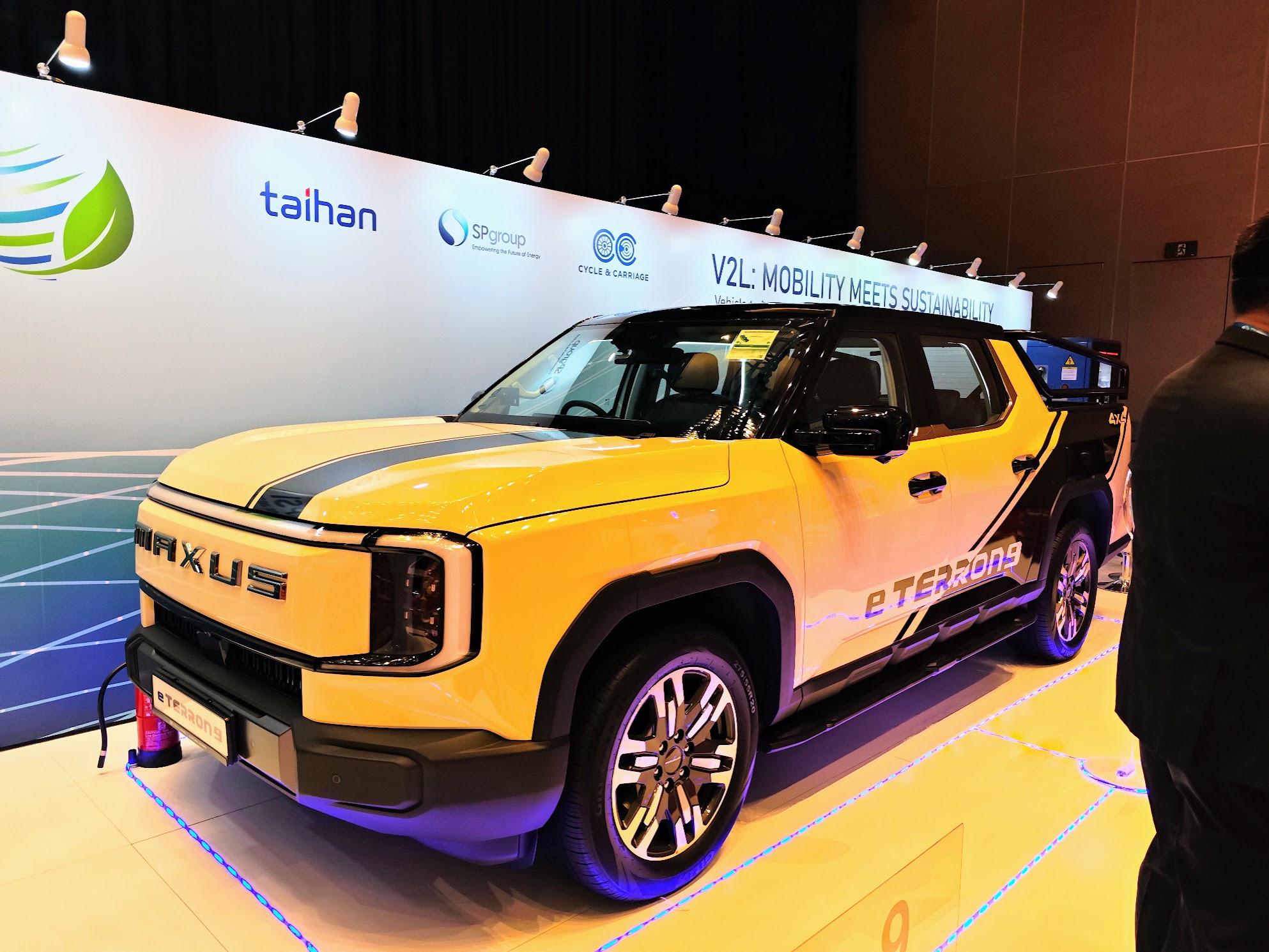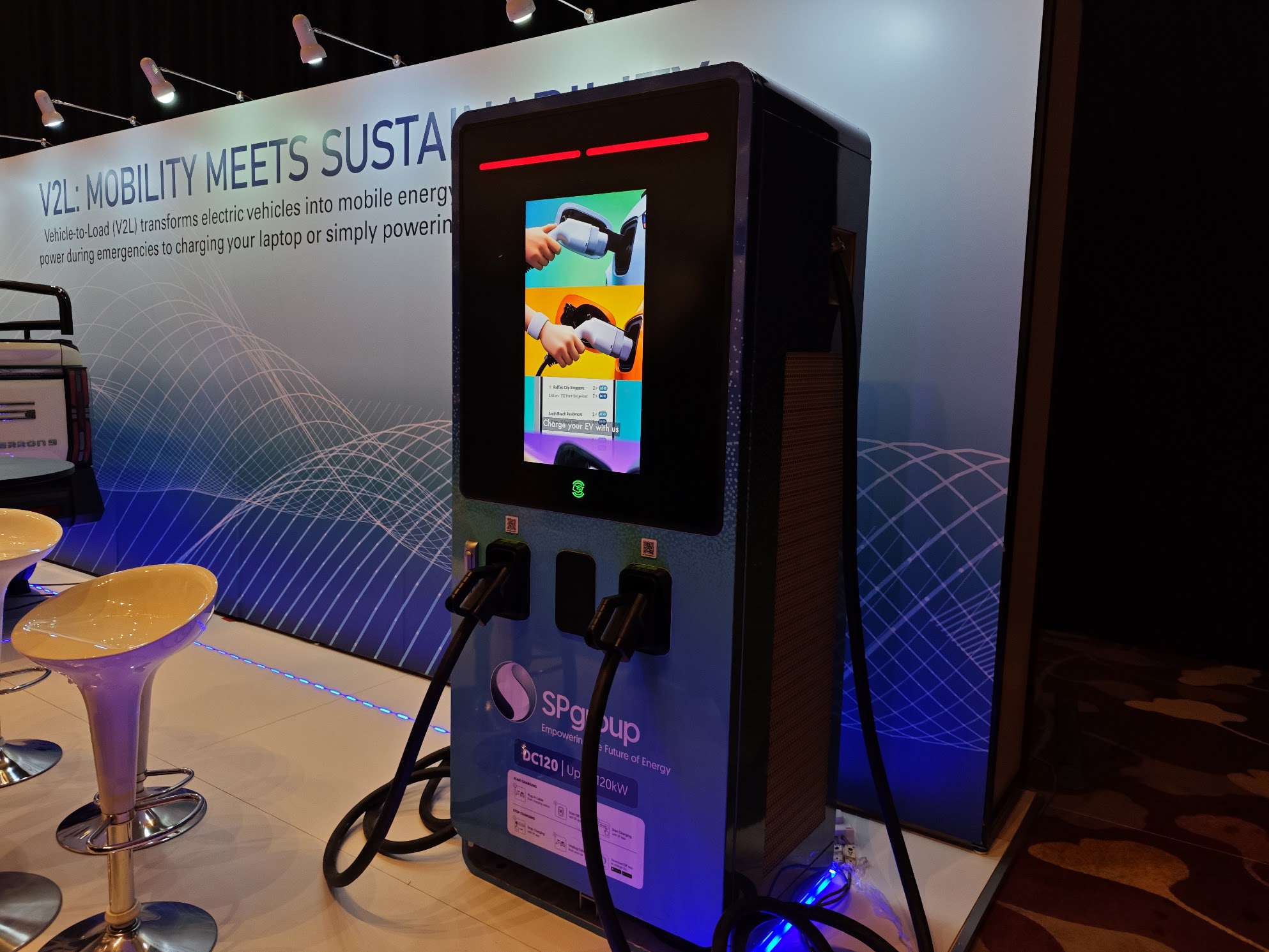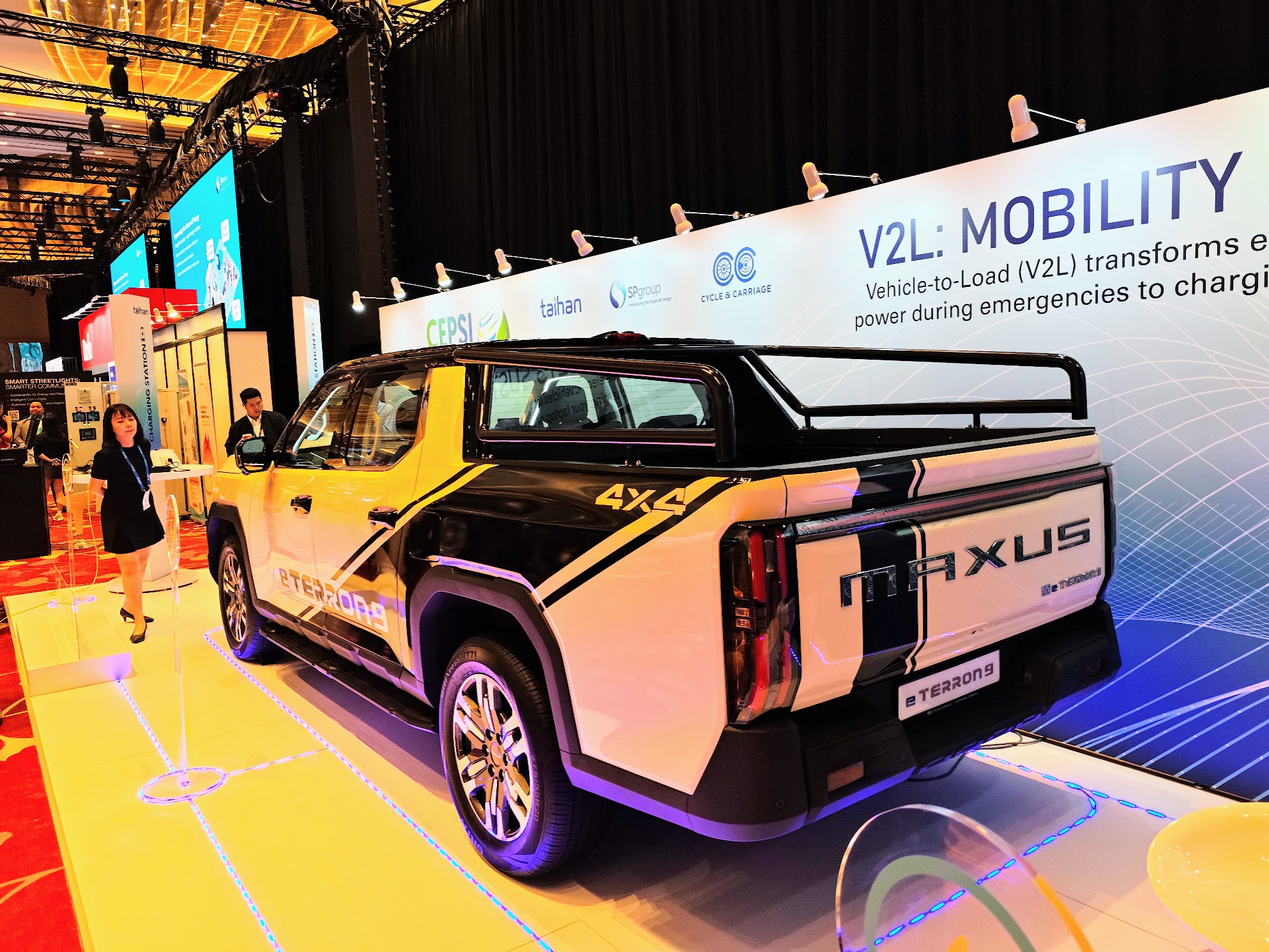Support CleanTechnica’s work through a Substack subscription or on Stripe.
The Conference of the Electric Power Supply Industry (CEPSI) 2025 Exhibition, held as part of the Asia Clean Energy Summit (ACES) at Singapore International Energy Week (SIEW) 2025, featured a prominent floor display examining the intersection of electric mobility and power infrastructure.
The exhibit centered on the Maxus eTerron 9 electric pickup truck alongside an advanced charging installation, illustrating concepts around vehicle-to-load (V2L) technology under the theme “Mobility Meets Supply.”
The eTerron 9 served as a case study in distributed energy resources for conference attendees from power utilities and energy sectors. The vehicle’s specifications — 325 kW (436 hp) dual-motor configuration, 3.5-tonne towing capacity, and 102.2 kWh battery pack — were presented in the context of grid support applications rather than conventional automotive performance metrics. The battery system was positioned as a potential mobile energy storage solution capable of emission-free backup power.

SP Group, Singapore’s utilities provider, demonstrated the charging infrastructure component of the display. The charging unit featured multiple ports and digital interfaces, with technical demonstrations showing bidirectional power flow capabilities. The V2L function offers up to 6.6 kW of external power output, which industry representatives examined for applications including equipment operation, diagnostic tools, and emergency lighting during grid disruptions.
The exhibition addressed commercial fleet requirements through discussion of the vehicle’s payload specifications. Current Luxury and Premium variants, equipped with adaptive air suspension, offer 620 kg payload capacity. Company representatives indicated that a planned Utility trim would target commercial applications with payload capacity reaching 1,050 kg through alternative suspension systems and component optimization. This higher-capacity variant addresses fleet operator requirements where 1,000 kg payload thresholds determine operational viability and regulatory compliance in various markets.
The display represented ongoing industry examination of electric vehicles as grid-connected energy assets rather than purely transportation equipment, reflecting broader discussions at CEPSI 2025 about decentralized power systems and energy resilience.

Sign up for CleanTechnica’s Weekly Substack for Zach and Scott’s in-depth analyses and high level summaries, sign up for our daily newsletter, and follow us on Google News!
Have a tip for CleanTechnica? Want to advertise? Want to suggest a guest for our CleanTech Talk podcast? Contact us here.
Sign up for our daily newsletter for 15 new cleantech stories a day. Or sign up for our weekly one on top stories of the week if daily is too frequent.
CleanTechnica uses affiliate links. See our policy here.
CleanTechnica’s Comment Policy


